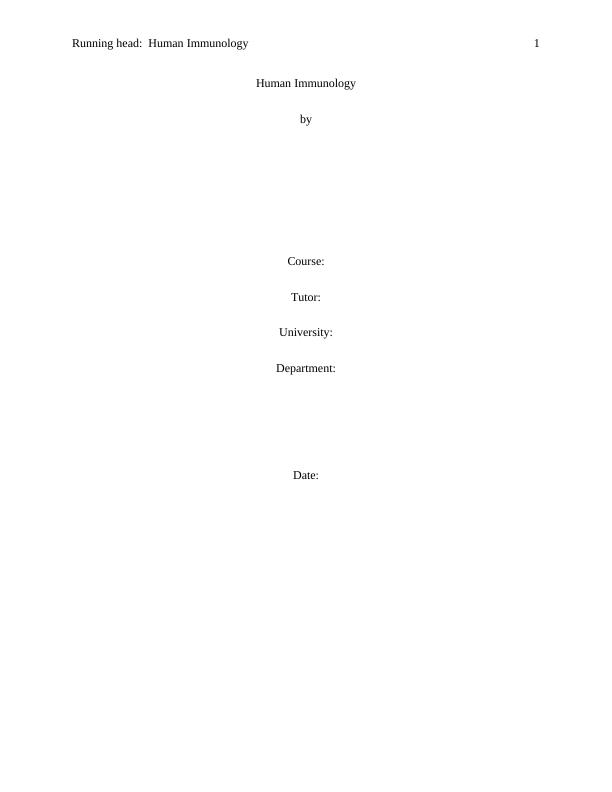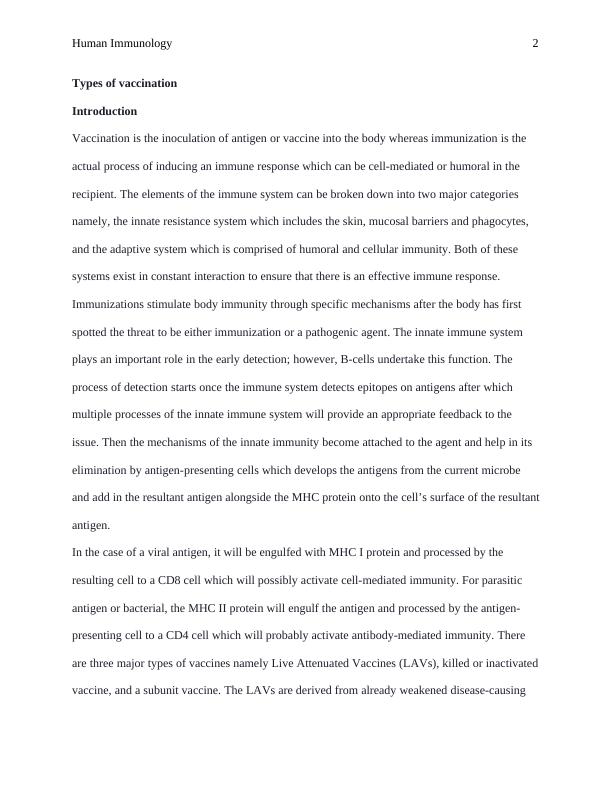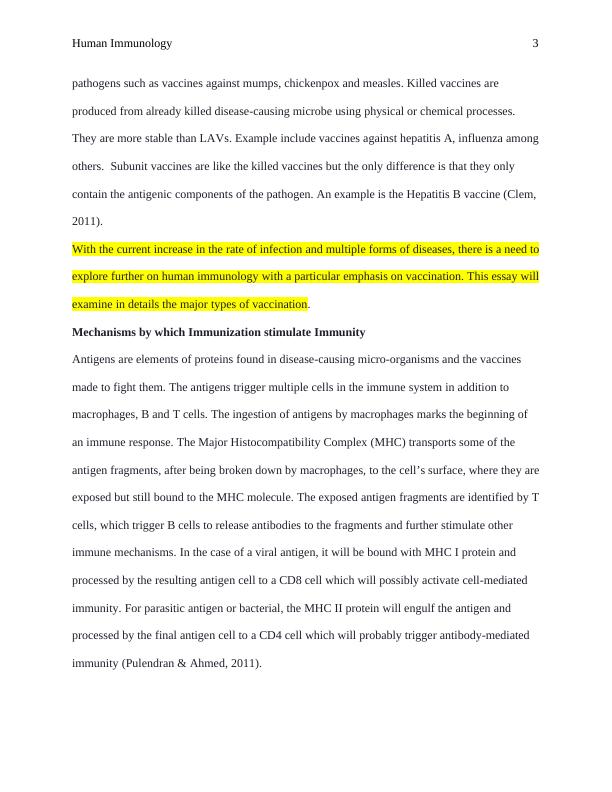Human Immunology Course 2022
Write a short essay on the types of vaccination (live attenuated, killed and subunit), including a brief history, principles of vaccination, and future directions in vaccination. Use a maximum of six journal articles from governmental websites. The word count should be 1200.
6 Pages1369 Words19 Views
Added on 2022-10-01
About This Document
please use Jorurnal articles from governmental websites
Human Immunology Course 2022
Write a short essay on the types of vaccination (live attenuated, killed and subunit), including a brief history, principles of vaccination, and future directions in vaccination. Use a maximum of six journal articles from governmental websites. The word count should be 1200.
Added on 2022-10-01
ShareRelated Documents
End of preview
Want to access all the pages? Upload your documents or become a member.
MHC Class II and Vitamin D
|15
|4909
|91
Understanding the Role of MHC Molecules in Immunity and the Importance of Vitamin D
|12
|4231
|445
The Immune System
|9
|2349
|89
Biological Sciences Name of the Student Name of the University Author Note Task 1 Antibody System
|12
|2824
|11
Monoclonal Antibodies in Clinical Practice: A Breakthrough in Immunotherapy
|7
|1056
|133
(solved) Adaptive Immune System
|2
|454
|157



